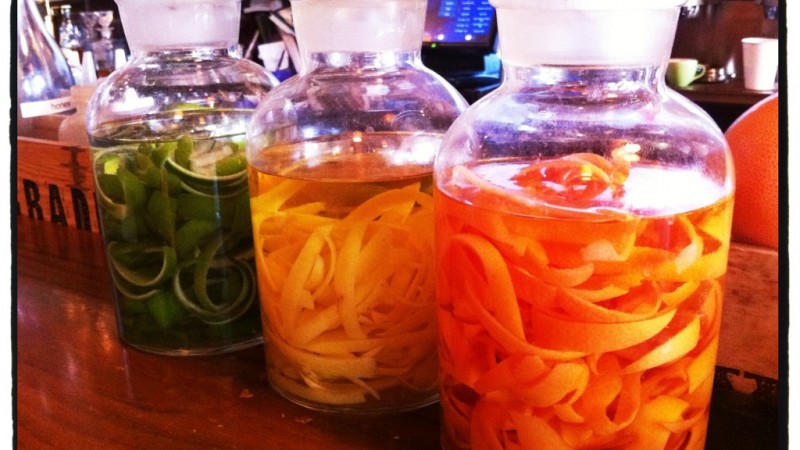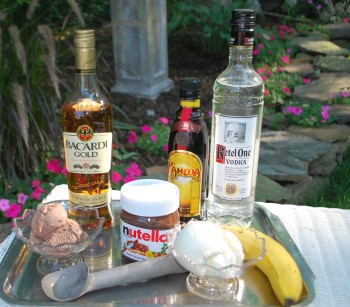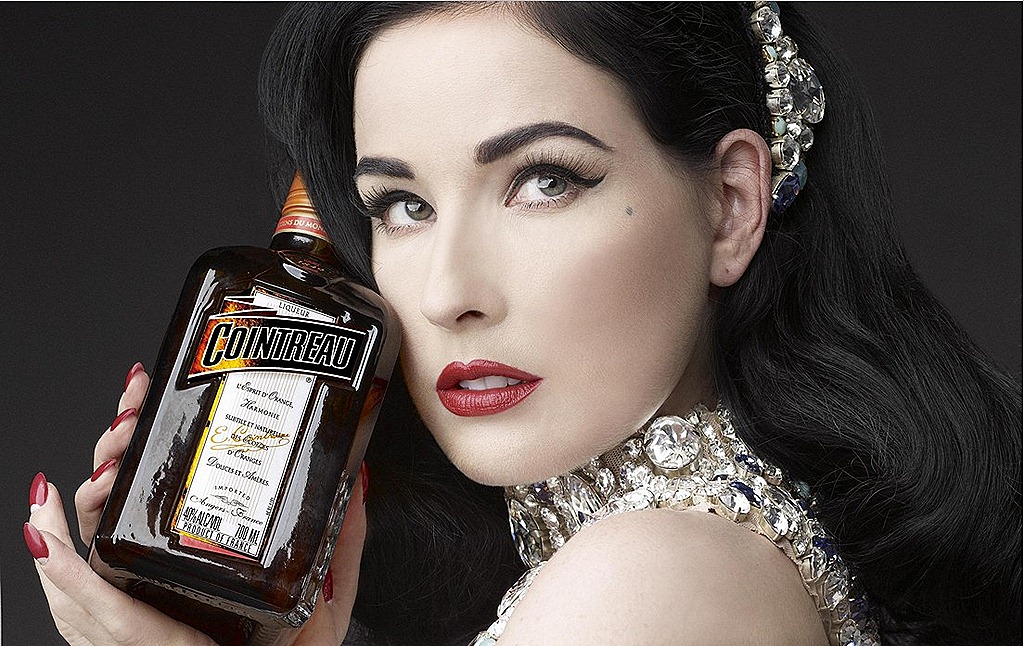
We’ve all seen that funky jar of liquor behind the bar… sometimes it is obvious what’s inside, sometimes not so much. You know the jars I’m talking about. The jars with sliced Pineapple and vodka, sliced Jalapeno’s and vodka, sliced Strawberries and vodka… zzzzz. Humph, snort? Oh, sorry. I dozed off for a second there. If we are lucky, we find some creativity in finer establishments, lavender-vanilla bean infused rums, bacon infused bourbons or Cobra infused Sochu. This of course, does not guarantee a palate pleasing experience. With a couple notable exceptions these infusions smell incredible and taste mediocre unless placed in the hands of a talented cocktailian.
There are in fact many ways to flavor a spirit. A mixologist or master distiller will flavor a spirit in one of five ways: Compounding, Distillation, Maceration, Infusion or Percolation. Compounding is achieved by adding artificial or natural flavors to a spirit after distillation. Distillation is the process of adding ingredients to the mix before fermentation and letting the flavors in those ingredients adhere to the ethanol molecules before extracting the alcohol from the mix. Maceration involves extracting flavors by crushing or muddling. Infusion is the easiest. Put ingredients in a jar and fill with alcohol. Since ethanol is a solvent, if the ingredients have any natural oils, they are quickly absorbed and the spirit takes on those flavors. But what if we want to exact caramelized flavors that result from cooking? The wild card is Percolation; the rarely used art of cooking spirits to incorporate flavors within them.
The reason we avoid cooking spirits is because the evaporation point of ethanol is lower than water, therefore when we try to flavor a spirit through cooking we end up burning off the alcohol. It turns out this is an excellent way to flavor foods… think bananas foster with rum, or a brandy flambé. But how can we extract subtle flavors from foods and put them into our spirits? This is a different matter entirely. Some foods taste notably different when cooked than raw. Ask most mixologist to percolate a spirit and they reach for the coffee pot or pressure cooker. However, there is an alternate method of percolating spirits that has only recently been employed by a select few… cooking sous vide.
Ah-ha! (says every chef reading this). What the hell is Sous Vide (asks everyone else)? Cooking Sous Vide (under water) is actually a very classic French way of cooking. Place meats, fish or vegetables into an airtight bag and place in a warm water bath, thus very, very slowly caramelizing the natural sugars within. Chef Thomas Keller is famous for his Maine lobster tail which he adds to a cryo-vacuumed packed bag with just a little butter, coarse sea salt and cooks sous vide. The lobster cooks so slowly that the proteins never seize up and because the bag is vacuum packed the butter melts while the tail expands from the heat. In this way, the butter and salt are literally drawn into the tail resulting in an incredibly tender, perfectly seasoned buttery piece of perfection. But the advantage to using this technique on spirits has far greater implications.
By cooking spirits in an airtight bag, the ethanol can’t cook off. Now a universe of new flavors has just become available to the creative mind. In 2004, I created my own artisanal Tonic water from scratch, a full year before Fever Tree, Q-tonic and now a dozen other producers. Today it’s not uncommon to see a cocktail menu with a “house-made” tonic. Before I left PER SE, it was always my intention to create my own gin. I would have simply taken a high quality vodka, added it to an airtight bag and fill it up with botanicals. Juniper, citrus peels, cardamom, cassia bark, angelica root, lavender, cucumber, rose petals, saffron… whatever I wanted. Several years back, I mentioned this idea to a dear friend and mixologist in Vancouver. A year later, she was cooking spirits sous-vide with hemp (yes, the active ingredient remains. No I did not partake). If the final product has extracted some undesirable color, simply pass several times through a fine coffee filter or cheese cloth and you can revert to a clear spirit.
So the next time you decide to make an infusion behind the bar, consider percolation. Now flavoring spirits is only limited by your imagination. The flavors you adopt cannot be replicated using any of the other methods, yet this is the least utilized method for adding flavors to distillates. So don’t be just another jar head, the next time you gain a hankering to create an insane infusion, consider perky perks of percolation.



